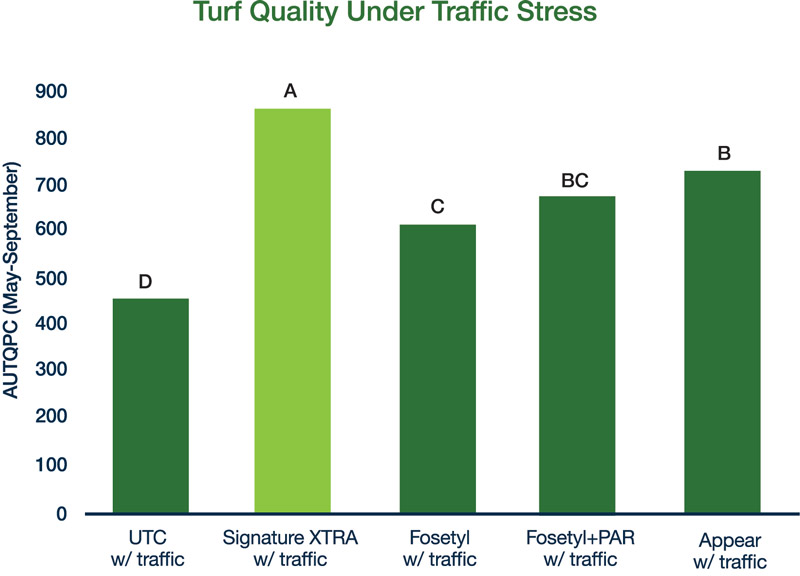Editor’s note: The following article was supplied by Bayer. All product claims, research cited and other information is directly from the company.
 Many different phosphorous acid-based products (phosphonates) exist in the turf market today. While many have similar disease control claims, key differences exist when it comes to the formulation and plant health benefits delivered by these various products. Below is a review of phosphonates, including considerations when selecting a phosphonate for use on putting greens.
Many different phosphorous acid-based products (phosphonates) exist in the turf market today. While many have similar disease control claims, key differences exist when it comes to the formulation and plant health benefits delivered by these various products. Below is a review of phosphonates, including considerations when selecting a phosphonate for use on putting greens.
A little bit about phosphonates
How do phosphonates work? Foliar uptake of PO3 (rather than the fertilizer form of PO4) sends a stress signal through the plant and results in production of higher levels of antimicrobial compounds that deter or slow infection. This is known as systemic acquired resistance (SAR).
SAR is not free. There is an energy cost to the plant with each application of a phosphonate.
Target diseases with phosphonates. Primarily pythium and anthracnose.
Why so salty?
Phosphonic acid is formed when phosphorous acid is mixed with water. This strong acid must be combined with other chemicals to be safely used on turf surfaces.
Phosphonic acid neutralized with an alkali salt (potassium hydroxide) forms potassium phosphite — the active ingredient in most turf phosphites, including Fiata Stressgard and Appear.
Phosphonic acid reacted with ethanol forms ethyl-phosphonate, neutralized with aluminum ions creates Fosetyl-Aluminum (Fosetyl-Al) — the active ingredient in Signature XTRA Stressgard and Chipco Signature.
Differences in stabilization of the Fosetyl-Al equates to more phosphites per molecule and less likelihood for plant injury with reduced salt concentration compared with potassium phosphites. More phosphites per molecule also equates to improved disease control.
Is it hot in here?
Some phosphonates have been shown to enhance certain physiological processes and improve root growth in turfgrass grown in stressful environments.
The proprietary formulation in Signature XTRA Stressgard, Chipco Signature, and Fiata Stressgard has been shown to increase chlorophyll, resulting in enhanced photosynthesis. This helps make up for the increased energy cost for SAR.
Fosetyl-Al in the form of Signature XTRA Stressgard or Chipco Signature is widely researched and has shown to optimize plant health and mitigate common abiotic stresses like heat, drought and traffic.
Many other potassium phosphites can cause tip burn or phytotoxicity and often have restrictive label language regarding applications in severe weather or on stressed turf.
Formulation matters
The safety and benefits of phosphonates on turf are often dependent on the formulation of the product.
Chipco Signature was the pioneer in this area, with over 25 years of research and on-course benefits of mitigating heat, drought, shade and traffic stress.
Other phosphites alone or combined with pigments have not consistently performed to the standard of Chipco Signature or Signature XTRA Stressgard (see research example below).

2018 traffic stress trial — Dr. Jim Murphy, Rutgers University
Turf quality under traffic stress. Trial conducted by Dr. Jim Murphy at Rutgers University. Traffic stress induced via mechanical foot traffic simulator 6 days per week from June-September. All products were applied at commensurate labeled rates on a 14-day schedule throughout the duration of the trial.
Need more info?
For additional guidance, contact your Bayer area sales manager, or learn more on Bayer’s website.
Paul Giordano, Ph.D., is a Bayer Green Solutions Team specialist and has more than 15 years of experience in the turfgrass industry.